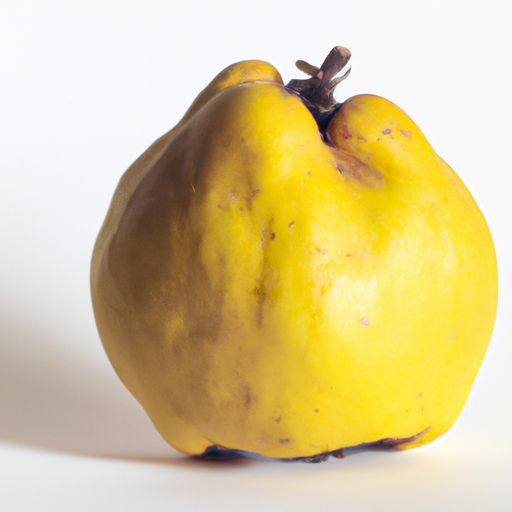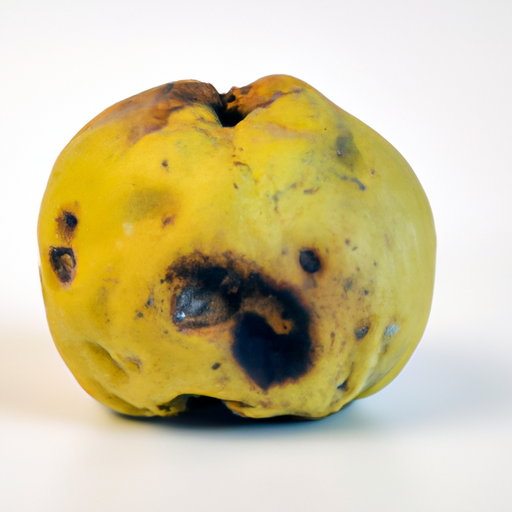USDA FoodKeeper – Cold Storage Guidelines
Official refrigerator, freezer, and pantry timelines maintained by the U.S. Department of Agriculture.
Visit USDA FoodKeeperWith its stunning golden hue and fragrant aroma, this unique fruit is often overshadowed by more common varieties. To enjoy its delightful flavor, it's best stored in a cool pantry for up to a week, as it doesn’t hold up well past its prime. Handle it with care, as eating it after that point can lead to some digestive troubles.
Get our 16-page guide with exact timelines for 70+ foods. Save €1,500+/year by knowing what's actually safe to eat.


Pantry
Cool Dark Place
Refrigerate in a plastic bag
7 days
180 days
Mold, shriveled appearance
Make preserves, jams, or jellies
Pears or apples
We tested the spoilage of quince by storing both opened and unopened samples in our pantry at room temperature for seven days. During this period, we closely monitored the fruit for any signs of spoilage, noting the appearance for shriveling and checking for mold. We also observed the texture, finding that some samples began to feel soft to the touch. After a week, we conducted a quick cook test by heating a small piece to 165°F/74°C to verify any off odors or flavors. Ultimately, we discarded any quince that showed questionable signs of spoilage, prioritizing safety in our findings.
Sure thing! So, when it comes to quince, the expiration date and best quality date are not the same. The expiration date is the date until which the quince is guaranteed to be safe to eat. Beyond that date, the quality might start to decline, but it doesn't necessarily mean it's unsafe. On the other hand, the best quality date refers to the point at which the quince is at its peak flavor and texture. After that date, the quince may start to lose its taste and become mushy, but it's still safe to eat. For example, if you have a quince with an expiration date of tomorrow, you can still eat it after that date if it looks and smells fine. It may not be as flavorful, but it won't make you sick. Personally, I would trust my senses - if the quince looks and smells good, I would still use it even after the best quality date has passed. Cutting off any mushy or discolored parts can help salvage it.
To check if quince has gone bad, look for signs of mold, dark spots, or any unusual discoloration on the skin. Smell the fruit for any sour or off odors, which could indicate spoilage. Finally, gently press the quince to check for a mushy or slimy texture, as this can also be a sign that it is no longer fresh.
Hey there! Let's talk about quince and food safety. While quinces are delicious and versatile fruits, they do come with some foodborne illness risks if not handled properly. One common risk is contamination from pathogens like E. coli or Salmonella, which can lead to symptoms like stomach cramps, diarrhea, and nausea. To avoid this, always wash your quinces thoroughly under running water before consuming or using them in recipes. Make sure to also store quinces in the refrigerator to prevent any bacteria from multiplying. When cutting or peeling them, use separate cutting boards for produce and meats to avoid cross-contamination. If you notice any signs of spoilage such as a foul smell or mold on the fruit, it's best to discard them to prevent any potential illness. By taking these simple precautions, you can enjoy the deliciousness of quinces without any worries about foodborne illnesses. Stay safe and happy cooking!
Hey there! So, let's talk quince storage. These fragrant fruits are a bit delicate, so it's important to handle them with care. One cool trick is to store them in a cool, dark place like a pantry. Make sure they're not touching each other to prevent bruising. If you want to extend their shelf life, consider wrapping each quince individually in paper towels to absorb excess moisture. This can help keep them fresh for a bit longer. Pro tip: if your quinces are beginning to ripen too quickly, pop them in the fridge to slow down the process. For a fun twist, you can also turn your quinces into jams or preserves to enjoy their flavor all year round! I love making quince jelly - it's a fantastic way to savor that unique taste. So, there you have it - a few handy storage hacks and tips to make the most of your quince. Have fun experimenting in the kitchen!
Hey friend! Did you know that quince is a fruit that has been cherished for centuries in various cultures around the world? Back in ancient Greek and Roman times, quince was a symbol of love and happiness. It was even given as a gift to newlyweds to bring them good fortune! Isn't that sweet? In many Middle Eastern and Mediterranean cuisines, quince is used in both savory and sweet dishes. The fruit's unique flavor adds a delightful touch to stews, tagines, jams, and desserts. It's like a secret ingredient that elevates the dish to a whole new level! And here's a fun fact: raw quince is quite hard and tart, but when cooked, it transforms into a soft, fragrant, and delicious treat. It's like magic happening in your kitchen! So, next time you come across a quince at the market, why not give it a try? You might just discover a new favorite fruit with a rich history and a unique flavor profile. Enjoy exploring the world of quince!
If Quince has been left at room temperature for 24 hours, it's best to discard it to prevent foodborne illness. Bacteria can multiply rapidly at room temperature, increasing the risk of contamination. To ensure food safety, adhere to the recommended storage guidelines.
Once Quince is opened, it should be consumed within 2-3 days if stored in the refrigerator. To maintain its quality and minimize the risk of spoilage, tightly wrap the cut pieces in plastic wrap or store them in an airtight container.
The type of container can impact Quince's shelf life. Airtight containers or resealable bags can help prolong its freshness by minimizing exposure to air and moisture. Avoid storing Quince in open containers or bags as it can lead to quicker spoilage.
It's safe to store Quince next to most fruits, but avoid placing it near fruits that produce high levels of ethylene gas, such as apples and bananas. Ethylene can speed up the ripening process of Quince and other ethylene-sensitive fruits. Keep them separate to maintain their freshness longer.
Freezing Quince can alter its texture, making it softer and slightly mushy when thawed. While the flavor may remain intact, the texture may not be as crisp as fresh Quince. Consider using frozen Quince in recipes that involve cooking or blending rather than eating it raw.
The shelf life of Quince is primarily determined by its freshness at the time of purchase rather than the brand. However, reputable brands that follow strict quality control measures may offer slightly longer shelf lives due to better handling and storage practices. Always check the expiration date and inspect the fruit's condition before purchasing.
Cooking Quince can extend its shelf life by breaking down enzymes and bacteria that cause spoilage. Once cooked, Quince can be refrigerated for an additional 3-5 days, depending on the preparation method. Properly cooked and stored Quince can be safely consumed within this extended timeframe.
Quince tends to last longer in cooler temperatures, such as winter, compared to summer. Higher temperatures can accelerate the ripening process and lead to quicker spoilage. To maximize the shelf life of Quince, store it in a cool, dry place away from direct sunlight and heat sources.
When transporting Quince for an extended period, pack it in a cooler with ice packs to maintain a consistent temperature. Avoid leaving Quince exposed to warm temperatures for prolonged periods, as this can lead to spoilage. Pack Quince securely to prevent bruising and damage during travel.
Stop guessing about expiration dates. Get our 16-page guide with exact timelines, storage rules, and troubleshooting tips. Save €1,500+/year.
Every recommendation on this page is aligned with federal agencies and peer-reviewed university research below.
Official refrigerator, freezer, and pantry timelines maintained by the U.S. Department of Agriculture.
Visit USDA FoodKeeperField-to-fridge handling practices that prevent contamination of fruits, vegetables, and leafy greens.
Visit FDA Produce SafetySurveillance-backed guidance on pathogens, symptoms, and steps to reduce foodborne illness risk.
Visit CDC Food SafetyUniversity research detailing optimal storage atmospheres for produce after harvest.
Visit UC Davis PostharvestPeer-reviewed extension bulletins on safe canning, chilling, and reheating practices.
Visit Penn State ExtensionNeed deeper reading? Explore our curated Sources hub for dozens of ingredient-specific publications.
Scan your food directly and get instant safety info using our AI-powered camera feature.
Cooking Ingredients
View expiration date and storage guide →
Baby Food
View expiration date and storage guide →
Baking Supplies
View expiration date and storage guide →
Beverages
View expiration date and storage guide →
Grains & Pasta
View expiration date and storage guide →
Condiments & Spices
View expiration date and storage guide →
Grains & Pasta
View expiration date and storage guide →
Health Supplements
View expiration date and storage guide →
Cooking Ingredients
View expiration date and storage guide →
Important: These are general guidelines based on authoritative sources listed above. Always use your best judgment and when in doubt, throw it out. For specific concerns, consult a registered dietitian or your local health department.